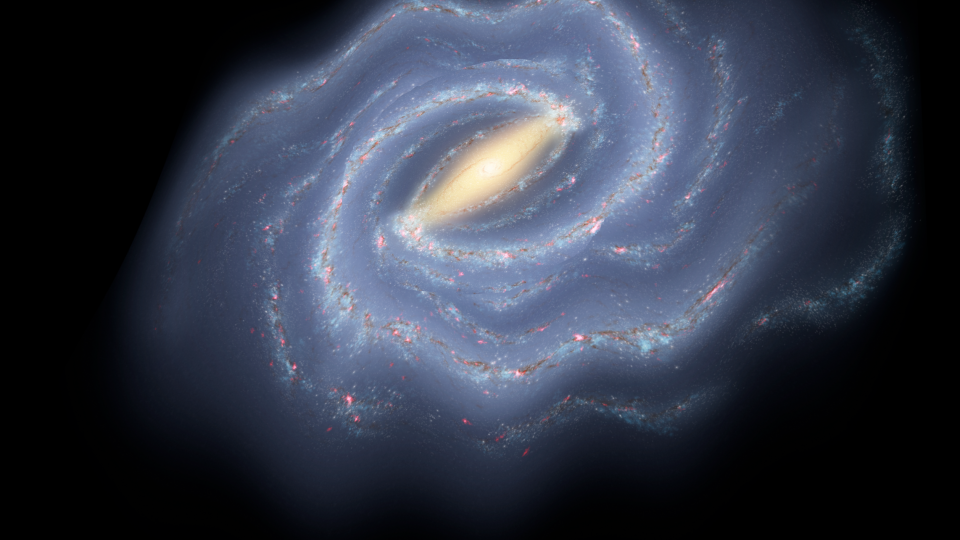Reviewed by Mila PereraSep 26 2022
A group headed by investigators from Lund University in Sweden utilized data from the Gaia space telescope and revealed that significant parts of the Milky Way’s outer disk vibrate.

Image Credit: NASA JPL-Caltech R. Hurt (SSC Caltech)
The ripples were created by a dwarf galaxy, currently seen in the constellation Sagittarius, that shook the Milky Way as it passed by hundreds of millions of years ago.
The Milky Way has 100–400 billion stars. Astronomers believe that it was born around 13.6 billion years ago, appearing from a rotating cloud of gas comprising hydrogen and helium.
The gas later gathered in a rotating disk where the stars, like the sun, were formed.
The researchers published their study in the Monthly Notices of the Royal Astronomical Society, detailing their observations of the stars in the outer regions of the galactic disk.
We can see that these stars wobble and move up and down at different speeds. When the dwarf galaxy Sagittarius passed the Milky Way, it created wave motions in our galaxy, a little bit like when a stone is dropped into a pond.
Paul McMillan, Study Lead and Astronomy Researcher, Lund Observatory
The researchers explored a broader portion of the Milky Way’s disk than previously possible, thanks to data from the European space telescope Gaia.
Astronomers have assembled a complicated puzzle by measuring the strength of the ripples in various regions of the disc, which has led to information about Sagittarius’ past history and its orbit around the galaxy.
At the moment, Sagittarius is slowly being torn apart, but 1–2 billion years ago it was significantly larger, probably around 20 percent of the mass of the Milky Way’s disk.
Paul McMillan, Study Lead and Astronomy Researcher, Lund Observatory
The experts are able to investigate an immense portion of the Milky Way using Gaia's data.
The telescope, which has been operating since 2013, has monitored the movement of almost two billion stars across the sky and the movement of 33 million stars towards or away from the planet to date.
With this new discovery, we can study the Milky Way in the same way that geologists draw conclusions about the structure of the Earth from the seismic waves that travel through it. This type of ‘galactic seismology’ will teach us a lot about our home galaxy and its evolution.
Paul McMillan, Study Lead and Astronomy Researcher, Lund Observatory
Journal Reference
McMillan, P. J., et al. (2022) The disturbed outer Milky Way disc. Monthly Notices of the Royal Astronomical Society. doi.org/10.1093/mnras/stac2571.